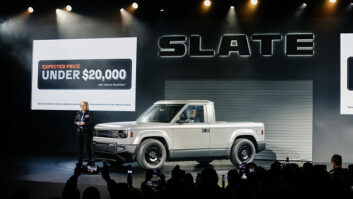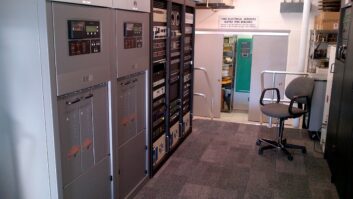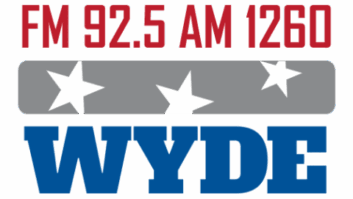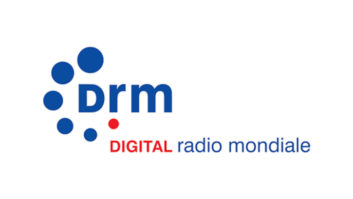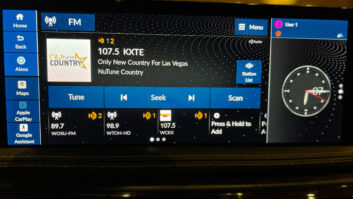Radio Currents Online – Jun 02 – Jun 08, 2003
Jun 1, 2003 12:00 PM
Radio technology news updated as it happens.
Click here to view the Currents Online archive.
News
| Business | People | Products
News
New Ownership Rules Affect Form 315and 316 Filings
Washington – June 2, 2003 – Following its release of the Report and Order concerning new media ownership rules, the FCC announced that new processing guidelines will take effect for new broadcast applications for assignment or transfer of control of TV and radio authorizations. Also, certain modification applications will be affected.
The Commission has established a freeze on the filing of all radio and television transfer of control and assignment applications that require the use of FCC Form 314 or 315. The forms will be revised to reflect the new rules adopted on June 2, 2003. The freeze will be in effect starting with the order�s adoption date, until notice has been published by the Commission in the Federal Register that the Media Bureau has approved the revised forms. The FCC will continue to allow the filing of short-form (FCC Form 316) applications at any time.
Applicants with long-form assignment or transfer of control applications (FCC Form 314 or 315) or with modification applications (FCC Form 301) that are pending as of adoption of the order may amend those applications by submitting new multiple-ownership showings to demonstrate compliance with the ownership rules adopted in the order or by submitting a request for waiver of the new rules. Parties may file such amendments once notice has been published by the Commission in the Federal Register that the Media Bureau has approved the information collection requirements contained in such amendments. Applications that are still pending as of the effective date of the new rules will be processed under the new rules.
Petitions to deny and informal objections that were submitted to the Commission prior to the adoption date of the order and that raise issues unrelated to competition against pending applications as defined above will be addressed with respect to those issues at the time the FCC acts on such applications. Petitions and informal objections that were submitted to the Commission prior to the adoption date of the order and that contest pending applications solely on grounds of competition pursuant to the interim policy will be dismissed as moot.
Noncommercial WebcastersReach Agreement with RIAA
Washington – June 02, 2003 – A new royalty agreement will now allow many college and K-12 webcasters to continue providing music over the Internet, and will allow new services to begin on many campuses. Several groups representing the spectrum of noncommercial webcasters have successfully negotiated an agreement with the Recording Industry Association of America that provides a royalty scheme alternative to rates previously established by the Librarian of Congress.
College webcasters that were threatened by exorbitant royalty rates and accompanying oppressive recordkeeping requirements will likely welcome this agreement, which results in greatly reduced fees dating back to 1998 and continuing forward until the end of the year 2004, and total relief from any potential recordkeeping obligations. Most college radio stations retransmitting their over-the-air programming will see royalty rates cut about in half, and Internet-only college stations will benefit from even greater savings. Many college webcasters greatly feared anticipated federal regulations requiring detailed reports of music played over their stations. The negotiated deal totally eliminates the recordkeeping requirements for the length of the agreement.
The new agreement with the RIAA was negotiated by Collegiate Broadcast Incorporated, the American Council on Education and the National Religious Broadcasters Music License Committee, with the Intercollegiate Broadcasting System joining the bargaining team late in the process. The National Federation of Community Broadcasters participated in preliminary discussions, but did not complete the negotiations.
In the Small Webcaster Settlement Act, signed into law in December 2002, Congress established May 31 as the deadline for noncommercial interests to negotiate a rate structure that would provide an alternative to fees previously established by the Librarian of Congress. The new agreement was finalized literally just before midnight on May 31, the deadline. Any noncommercial webcaster meeting the conditions of this settlement will be able to take advantage of its provisions by electing to accept the terms within 30 days of its being published in the Federal Register by the Copyright Office. College and K-12 stations must elect to accept the terms by October 15, 2003, for even greater savings.
FCC Votes 3-2 onOwnership
Washington, DC – June 2, 2003 – The FCC adopted its new broadcast ownership rules, stating that it feels the new rules are enforceable and reflective of the current media marketplace. Following plenty of press activity on the topic, the final vote covers nearly every aspect of media ownership. The public record of comments total more than 520,000.
According to a press release issued by the FCC, the new limits on broadcast ownership are “carefully balanced to protect diversity, localism, and competition in the American media system.” The release goes on to say that “The FCC concluded that these new broadcast ownership limits will foster a vibrant marketplace of ideas, promote vigorous competition, and ensure that broadcasters continue to serve the needs and interests of their local communities.”
The complete summary is available online through the FCC website at www.fcc.gov/Daily_Releases/Daily_Business/2003/db0602/DOC-235047A1.pdf.
Some of the leading points:
- The FCC has created a Diversity Index to permit a more sophisticated analysis of viewpoint diversity in this proceeding. The index is consumer-centric in that it is built on data about how Americans use different media to obtain news. Importantly, this data also enabled the FCC to establish local broadcast ownership rules that recognize significant differences in media availability in small vs. large markets. The objective is to ensure that citizens in all areas of the country have a diverse array of media outlets available to them.
- The FCC reaffirmed its goal of promoting localism through limits on ownership of broadcast outlets.
- The FCC reaffirmed its longstanding objective of encouraging greater ownership of broadcast stations by minorities and women.
The modified ownership rules adopted provide a new national and local regulatory framework that the FCC hopes will serve the public interest by promoting competition, diversity and localism. The Report and Order adopts a set of cross-media limits to replace the newspaper/broadcast and radio/television cross-ownership rules; modifies the local television multiple ownership rule; strengthens the local radio ownership rule by modifying the local radio market definition; incrementally modifies the national television ownership rule; and retains the dual network rule.
Highlights of the ownership rules:
Local Radio Ownership Limits. The FCC found that the current limits on local radio ownership continue to be necessary in the public interest, but that the previous methodology for defining a radio market did not serve the public interest. The radio caps remain at the following levels: - In markets with 45 or more radio stations, a company may own eight stations, only five of which may be in one class, AM or FM.
- In markets with 30-44 radio stations, a company may own seven stations, only four of which may be in one class, AM or FM.
- In markets with 15-29 radio stations, a company may own six stations, only four of which may be in one class, AM or FM.
- In markets with 14 or fewer radio stations, a company may own five stations, only three of which may be in one class, AM or FM.
The FCC replaced its signal contour method of defining local radio markets with a geographic market approach assigned by Arbitron. The FCC said that its signal contour method created anomalies in ownership of local radio stations that Congress could not have intended when it established the local radio ownership limits in 1996. The FCC closed that loophole by applying a more rational market definition than radio signal contours. The FCC said applying Arbitron�s geographic markets method will better reflect the true markets in which radio stations compete.
- All radio stations licensed to communities in an Arbitron market are counted in the market as well as stations licensed to other markets but considered “home” to the market.
- Both commercial and noncommercial stations are counted in the market. The FCC determined that the current rule improperly ignores the impact that noncommercial stations can have on competition for listeners in radio markets.
- For non-Arbitron markets, the FCC will conduct a short-term rulemaking to define markets comparable to Arbitron markets. These new markets will be specifically designed to prevent any unreasonable aggregation of station ownership by any one company.
- As an interim procedure for non-Arbitron markets, the FCC will apply a modified contour method for counting the number of stations in the market. This modified contour approach minimizes the potential for additional anomalies to occur during this transition period, while providing the public a clear rule for determining the relevant radio markets.
- In using the contour-overlap market definition on an interim basis, the FCC made certain adjustments to minimize the more notorious anomalies of that system. Specifically, the FCC will exclude from the market any radio station whose transmitter site is more than 92 kilometers (58 miles) from the perimeter of the mutual overlap area. This will alleviate some of the gross distortions in market size that can occur when a large signal contour that is part of a proposed combination overlaps the contours of distant radio stations and thereby brings them into the market.
The FCC also adopted a Notice of Proposed Rulemaking on defining non-Arbitron radio markets.
The TV rule changes are available in the FCC documentation. The FCC�s new TV and radio ownership rules may result in a number of situations where current ownership arrangements exceed ownership limits. The FCC grand-fathered owners of those clusters, but generally prohibited the sale of such above-cap clusters. The FCC made a limited exception to permit sales of grand-fathered combinations to small businesses as defined in the order.
In taking this action, the FCC sought to respect the reasonable expectations of parties that lawfully purchased groups of local radio stations that today, through redefined markets, now exceed the applicable caps. The FCC also attempted to promote competition by permitting station owners to retain any above-cap local radio clusters but not transfer them intact unless there is a compelling public policy justification to do so. The FCC found two such justifications: (1) avoiding undue hardships to cluster owners that are small businesses; and (2) promoting the entry into the broadcasting business by small businesses, many of which are minority- or female-owned.
The Diversity Index
The FCC�s Diversity Index (DI) reflects the degree of concentration in viewpoint diversity in local markets. Consistent with First Amendment concerns, the DI does not assess diversity by looking to the specific views expressed over a media outlet. Instead it measures the availability of outlets of various types and assigns a weight to each class of outlet (radio, newspaper, television) based on their relative value to consumers. The Diversity Index is modeled on the Herfindahl-Hirschmann Index (HHI), which is used in antitrust analysis to measure the degree concentration in an economic market. The HHI and the DI are derived by adding together the sum of squared market shares of competitors in each local market. The end result of the DI is an assessment of the degree of media diversity concentration taking into account all of the media outlets in the market.A complete explanation of the DI and how it is determined is included in the FCC release at www.fcc.gov/Daily_Releases/Daily_Business/2003/db0602/DOC-235047A1.pdf.
A hearing has been scheduled for Wednesday, June 4, at 9:30 a.m. in room 253 of the Russell Senate Office Building. The purpose of this hearing is to discuss the FCC’s June 2nd decision on various media ownership rules with the Commissioners of the FCC. The committee also will consider issues related to the FCC’s reauthorization. Senator McCain will preside.
Business
Andrew to Open ManufacturingFacility in Czech Republic
Orland Park, IL – June 6, 2003 – Andrew will open a manufacturing facility in Brno, the second-largest city in the Czech Republic. The company has signed a build-to-suit lease with CTP Project Invest for a 100,000 square-foot facility in Brno’s Central Trade Park (CTP) industrial zone. The facility will be completed and in production by the end of September 2003. The Brno facility opening is another step in Andrew’s restructuring plan.
The facility will employ 300 people and will be used for manufacturing microwave antennas and other wireless equipment for European markets. While the Brno facility is being constructed, Andrew is temporarily occupying two smaller leased facilities in Brno.
Sony Licenses Waves AudioProcessing
Tokyo, Knoxville; TN, and Tel Aviv – June 9, 2003 � Sony has agreed to license three of Waves’ audio processors for integration into Sony’s Sonicstage Mastering Studio application. Sony will include Waves’ Renaissance Bass, S1 Stereo Imager and L1 Ultramaxizer. Sony Vaio personal computers with the Sonicstage software and Waves processors will be shipping worldwide in the summer of 2003.
The Waves processors integrated into Sony’s Sonicstage Mastering Studio will deliver the same features as Waves’ standard professional tools. Some additional presets for consumers have been added and there are some minor functional limitations to simplify their use.
Digigram Announces LicensingPolicy for Ethersound
Arlington, VA – June 5, 2003 – Digigram announced at Infocomm 2003 that is has a new licensing policy for its patent-pending Ethersound technology. The new license makes it easier and more cost effective for pro audio manufacturers to integrate Ethersound technology into their products.
Under the new licensing formula, access is given to reference design and manufacturing files for direct integration of Ethersound technology in the manufacturers� products. Royalty rates for licensees will decrease based on the number of products sold, resulting in lower per-unit rates for multichannel devices. Software vendors may get access to the Ethersound API, allowing control of Ethersound devices and networks under existing or dedicated applications.
Patent-pending Ethersound creates low-latency audio networks using standard Ethernet cabling and components. Ethersound is designed to connect digital audio sources to networked audio devices. As many as 64 channels of 24-bit digital audio at 48KHz, plus bi-directional control information, may be transported to up to 60,000 networked audio devices. Ethersound licensees include Fostex Japan, Nexo, Bouyer, Innova SON and Auvitran.
Fastchannel to Open LA Office
Boston – Jue 5, 2003 – Fastchannel Network will open its sixth full-service North American office in late July of this year in Los Angeles. The company services over 150 California-based advertisers, ad agencies and production resource companies, including Paramount Pictures, TBWA Chiat Day and Initiative Media. Fastchannel currently has offices in Boston, Chicago, London, New York, San Francisco, Toronto and Seattle. The company�s Seattle office will consolidate its operations to the more strategically located LA office as part of the West Coast expansion of services.
Tannoy Expands Team, Unveils NewLogo
Kitchener, ON – June 2, 2003 -Tannoy North America has expanded its market development efforts with the addition of veteran commercial marketing specialist, Costa Lakoumentas. In his role of market development, a newly created position, Lakoumentas will help the company communicate the benefits of Tannoy technologies, products and the organization to its commercial, professional and residental customers.
Lakoumentas joins Tannoy with more than 20 years of industry experience as a contractor, system designer and marketing specialist. He spent more than four years at Mackie Designs in various roles including most recently, corporate director, global installed products and markets. While at Mackie he played a key role in the development of analog, digital and acoustic products marketed under the company’s various brands.
Almost one year ago Tannoy, merged with the Danish TC Group to form a holding company of eight individual businesses. The resulting group of companies continue to maintain their individual brand identities while leveraging the diverse technical expertise within the group. Tannoy intends to promote its enhanced setting with a unified global image and brand message. The company’s fist step in this process is updating the corporate logo.

Thales to Participate in DRMInaugural Broadcasts
Geneva – June 3, 2003 – Thales Broadcast and Multimedia will participate in the world�s first, daily Digital Radio Mondiale (DRM) broadcasts on June 16, 2003. In cooperation with T�l�diffusion de France (TDF), Thales will install a medium-wave/AM transmitter in Mont Sal�ve, France, and the content will be provided by Radio France. Thales will also coordinate key aspects of DRM�s live demonstrations on-site.
Thales Broadcast and Multimedia was a founding member of DRM. DRM is a non-proprietary, digital system for short-wave, medium-wave/AM and long-wave with the ability to use existing frequencies and bandwidth across the globe.
People
Glassman Steps Down asDigigram President

Arlington, VA – June 5, 2003 – Digigram has announced that Neil Glassman is stepping down from his position as president of Digigram Inc.
“My goals when I started with Digigram were to establish the company in North America, build its reputation and hire a superlative staff. I feel confident that all of those objectives were accomplished,” Glassman said. “Simply put, my work here is done.”
Digigram S.A., headquartered in Montbonnot, France, hired Glassman in March 1997 to start Digigram Inc. Glassman’s career in the broadcast industry includes work with Telos Systems and Bradley Broadcast. Glassman will continue working with broadcast equipment manufacturers and dealers by serving as managing director of the marketing communications company he co-created several years ago, Cowan Communications.
The Digigram Inc. staff will not change with the announcement. Operations and product support will continue to work with Digigram S.A. The U.S. sales staff of James Lamb and George Butts will be headed by Miranda Hageman-van de Pol, the recently-appointed sales and communications director for Digigram S.A. Hageman-van de Pol will personally manage some key U.S. accounts. Overall supervision of Digigram Inc. will be handled by Digigram S.A. managing director Philippe Delacroix, who will assume the title of Digigram Inc. president.
TM Century Adds To DomesticSales Team

Dallas – June 2, 2003 – TM Century has added Mike Gwartney as its domestic sales team regional manager-cable/post/TV. Gwartney will market TM Century�s production and imaging libraries, and Jingle Bank service to television, cable TV stations and post-production houses.
Gwartney has more than 20 years of television experience. He has been program director at KGMC-TV, Oklahoma City and KIDY-TV, San Angelo, Texas; program director for The Family Channel, USA, Virginia Beach, VA; VP international programming/affiliate relations for International Family Entertainment, Virginia Beach, VA; VP international programming/affiliate relations/consultant for FiT TV/Fox Sports Net, Santa Monica, CA; VP/programming for Middle East Television (METV) Virginia Beach, VA and executive director for Wisdom Works, Irving, TX.
Products
Mackie Releases UAD-1 Version 3.1
Woodinville, WA – June 5, 2003 � Mackie Designs has released the UAD-1 version 3.1 software and made available a new powered plug-in. Cambridge EQ. Version 3.1 enables multi-card support on the Macintosh platform as well as compatibility for the Cambridge EQ on Macintosh and Windows-based systems. Cambridge is a new a five-band, fully parametric EQ featuring high and low cuts with a wide variety of filter types and curves.
Version 3.1 software is a free download for registered UAD-1 owners available via the Universal Audio website or the Mackie website.
Eventide Ships ClockworksPlugins, Provides Free Trial
Little Ferry, NJ – May 30, 2003 – To announce the shipping status of the Eventide Clockworks Legacy plug-ins, Eventide has made them available for download from www.eventide.com/plugins/plugdemo.html. The trial versions are fully functional, time-limited versions.
The demo includes the H910, Omnipressor, Instant Phaser, Instant Flanger and H949 plug-ins for Digidesign Pro Tools TDM systems. The trail versions will function for seven days.
TC Works Ships TC Tools 3.6 forPro Tools
Westlake Village, CA – June 3, 2003 – TC Works� TC Tools 3.6, comprised of Mega Reverb, Chorus/Delay and EQsat plug-ins, now complements Pro Tools with support for Mac OS X and Windows XP as well as sampling rates up to 96kHz.
Mega Reverb�s algorithms are based on years of ongoing research and the core technology of the TC Electronic M5000 high-end studio processor. Features include improved diffusion, denser tails and more realistic room impressions.
The Chorus/Delay plug-in recreates the 1210 Spatial Expander with its modulation images such as Chorus, Flanging and Slap Delay with flexible routing and filtering facilities. Users can also adjust the modulation speed in beats per minute (BPM).
The EQsat plug-in is a high-performance for mastering. The processor provides five bands; three parametric and two additional shelving bands. The frequency response display gives instant feedback on the applied equalization curve. Additionally, the saturation emulation can be activated to create that warm, analog sound whenever desired.

